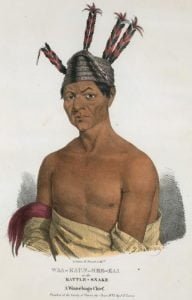Social Organization of the Winnebago
In each tribe there existed, on the basis of kinship a division, into clans and gentes. The names given to these divisions were usually those of the animals, birds, reptiles, or inanimate objects from which their members claimed descent, or which were regarded as guardian deities common to them all; these were known as their totems. The term “clan” implies descent in the female, and “gens” in the male line. Clans and gentes were generally organized into phratries; and phratries, into tribes. A phratry was an organization for ceremonial and other festivals. The Winnebago social organization was based on two … Read more




